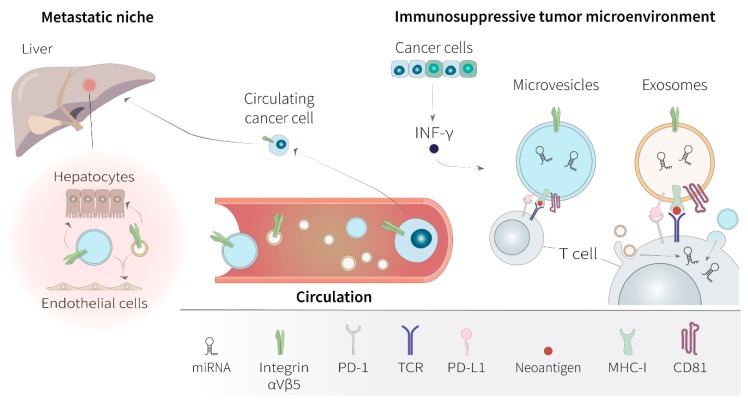Figure 2.
Functional relevance of extracellular vesicles in the oncogenesis of non-small cell lung cancer. In the contexts of non-small cell lung cancer (NSCLC), extracellular vesicles (EV)s, including both microvesicles and exosomes, can be regarded as cell signalosomes. EVs are able to influence the tumor microenvironment and modulate the immune response through downregulation of the T-cell receptor (TCR) activation by the programmed cell death ligand 1 (PD-L1), during neoantigen presentation via the major histocompatibility complex of class I (MHC-I) and co-engagement of the tetraspanin CD81. Production of immunosuppressive EVs in NSCLC patients is favored by circulating interferon-γ (INF-γ) in the tumor microenvironment. Tumor-derived EVs can display specific integrin patterns that target them to favorite organs, where they can influence the organotropism of the premetastatic niche. For example, organotropic metastasis formation of cancer cells in the liver is promoted by EV-expression of αVβ5 integrins. EV cross-talk with the surrounding stroma enables the endothelium to be more permissive for the extravasation of circulating cancer cells to further promote organ-specific invasion. Besides, delivery of the intraluminal microRNA (miRNA) EV cargo into recipient T cells, by membrane fusion or endocytosis, can have a major role in suppressing the anti-tumor inflammatory response.

